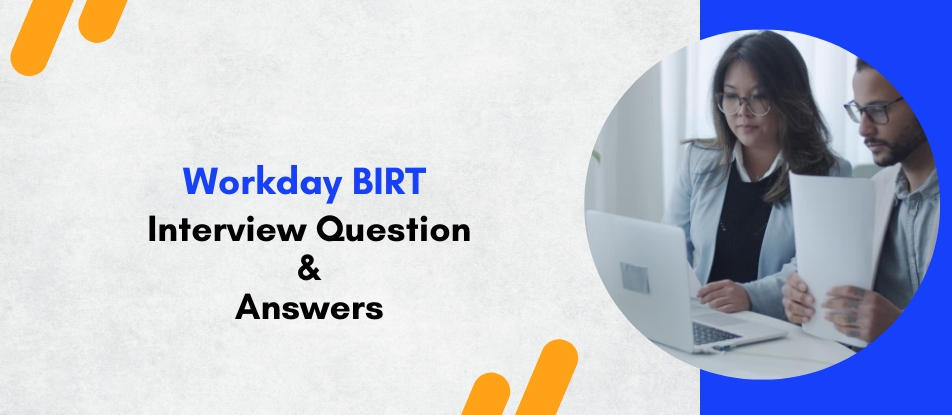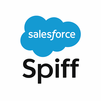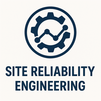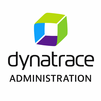
Workday BIRT training provides in-depth knowledge on creating customized, formatted documents using Workday’s Business Intelligence and Reporting Tools. This course covers the complete workflow—from sourcing XML data through Workday Advanced Reports to designing and deploying .rptdesign templates. Ideal for report developers and HRIT professionals, it enables the creation of dynamic outputs such as payslips, offer letters, and benefit statements, enhancing Workday’s reporting capabilities for compliance, branding, and user-specific communication.
Workday BIRT Training Interview Questions Answers - For Intermediate
1. How do you handle conditional formatting in a Workday BIRT report?
Conditional formatting in BIRT is achieved using expressions or scripting in the report elements’ property settings. For example, you can change the background color of a table row if a certain value meets a condition (like salary > $100,000). This is typically done using the “Highlight” or “Visibility” property, often with JavaScript or XPath expressions.
2. What types of outputs can Workday BIRT reports generate?
Workday BIRT reports typically generate PDF outputs, as they are commonly used for printable documents like pay slips or offer letters. However, depending on the implementation, BIRT can also produce HTML or DOC outputs. In Workday, the most common use case is generating a downloadable PDF as part of a report or business process.
3. What is a ‘data set’ in BIRT, and how does it relate to Workday reports?
A data set in BIRT defines the structure of the incoming data from Workday’s XML output. It is created by importing the XML schema of an Advanced Report and mapping the desired fields. The data set acts as a bridge between the XML source and the report layout, ensuring correct field population.
4. How do you handle images and logos in Workday BIRT templates?
Images and logos can be inserted into BIRT templates using the Image element. They can be sourced from a URL, embedded within the template, or linked from Workday’s tenant. Common practice involves storing the logo in Workday as a Workday Document and referencing it within the template using its public URL or base64 encoding.
5. How does BIRT manage table pagination and page breaks?
BIRT allows manual control of page breaks and pagination through the “Page Break Before” and “Page Break After” properties of report elements. This ensures that sections like summaries or signature lines start on a new page. BIRT also provides options for repeating table headers on new pages to improve readability in printed reports.
6. How can you optimize the performance of a BIRT report in Workday?
To optimize performance, limit the number of fields and records fetched from the underlying Workday custom report, filter data at the source level, and avoid complex expressions or nested tables. Efficient layout design and reducing conditional logic in the BIRT template also contribute to faster rendering and less memory consumption.
7. Can you use multiple data sources in a single BIRT template within Workday?
While BIRT supports multiple data sources technically, Workday currently allows only one data source—the XML from the associated Advanced Report. To mimic multiple sources, you need to join or organize the required data within Workday’s Report Writer and ensure it’s included in the XML structure for BIRT to consume.
8. What is the use of a Master Page in Workday BIRT reports?
A Master Page in BIRT defines the layout for headers, footers, and page setup (like margins or orientation). In Workday BIRT reports, it is used to ensure consistent branding, including repeating logos, titles, and footers with company contact information or confidentiality notices, across every page of the document.
9. How do you display repeating data structures, like multiple dependents or job history, in BIRT?
You use a BIRT table element that binds to a repeating node in the XML data structure. For example, to display employee dependents, bind the table to the dependents node and place columns for each field (e.g., name, relationship, birthdate). This structure dynamically expands based on the number of entries in the XML.
10. What is the best way to debug issues in BIRT report output?
To debug BIRT issues, first run the associated Workday custom report and export the XML. Then, load this XML into the BIRT Report Designer’s preview mode. Check data bindings, confirm XPath expressions, and use console logs or static placeholders to isolate problematic fields. Additionally, viewing the raw XML structure helps verify correct mapping.
11. What are XPath expressions and how are they used in BIRT reports?
XPath is a language used to navigate and extract data from XML documents. In BIRT, XPath expressions are used to locate values in the XML data source. For example, //Employee/Name extracts the employee’s name from the XML. XPath is essential in defining dynamic content and setting conditional formatting or logic.
12. How do you design a multilingual report using Workday BIRT?
To support multilingual output, include localized fields from Workday in the XML data source. In the BIRT template, use conditional logic or scripting to display content based on language codes. Alternatively, build separate BIRT templates per language and assign them through conditional logic in Workday business processes or document transformations.
13. How does BIRT handle null or missing values from Workday data?
BIRT allows handling nulls using expressions and scripting. You can use conditional expressions like row["fieldName"] != null ? row["fieldName"] : "N/A" to display a default value when the data is missing. This ensures cleaner outputs and prevents formatting issues caused by null fields.
14. Can you include hyperlinks in Workday BIRT reports?
Yes, BIRT allows hyperlinks to be embedded in text or image elements. These can link to internal company resources, policies, or external URLs. The link can be static or dynamic, based on field values in the XML. However, keep in mind that hyperlink support depends on the document output format (e.g., PDF vs HTML).
15. How does Workday determine who can view or access BIRT report outputs?
Access to BIRT report outputs is governed by Workday’s role-based and domain security. Users must have access to the underlying custom report and the associated data. If used in a business process, security on that process also applies. Additionally, document delivery (e.g., through Workday Drive or email) follows the security settings configured in the report delivery step
Workday BIRT Training Interview Questions Answers - For Advanced
1. How do you ensure BIRT report templates align with organizational compliance and legal standards?
Ensuring compliance in BIRT reports involves collaboration with legal and HR teams during the requirements phase to define standard language, disclaimers, and necessary document structure. All mandatory clauses, such as employment terms or compensation disclosures, must be included consistently. The layout must respect regional legal standards for document presentation, especially in global organizations. Additionally, the versioning and approval process for BIRT templates should be audited, and legal teams must validate all final outputs before they are deployed in business processes like onboarding or payroll communications.
2. How would you structure a BIRT template to support both single and multi-page outputs based on data volume?
To support varying output lengths, the template design must be highly flexible. Tables and text blocks should be structured to expand or contract without disrupting the layout. Page breaks must be managed conditionally to avoid large blank spaces or awkward formatting. A Master Page setup ensures consistent headers and footers on every page, while dynamic sections are carefully aligned to avoid overflow. Test runs with both small and large datasets help identify edge cases, allowing the report to adjust seamlessly regardless of record count or content length.
3. How do you troubleshoot formatting issues when a BIRT report renders differently in Workday than in the BIRT Designer?
Rendering discrepancies often occur due to font mismatches, unsupported formatting, or page layout differences between the BIRT Designer and Workday’s PDF renderer. To troubleshoot, compare the report in both environments using identical data samples. Ensure fonts used are supported in Workday and that element positioning is relative rather than absolute. Test on different page sizes and orientations. Reduce reliance on custom styles and standardize element padding and alignment. Adjusting design margins and simplifying nested structures often resolves inconsistencies.
4. Describe how you would implement conditional sections within a document, such as including a bonus summary only for eligible employees.
Conditional sections are implemented by configuring the visibility settings of containers in the BIRT layout. The logic checks whether a data field—such as a bonus eligibility flag—is true, and if so, displays the relevant section. This approach ensures the document remains clean and readable, with no gaps or blank areas when the section is hidden. Care must be taken to apply the logic at the correct layout level so it impacts all elements of the conditional content, including headings, lines, and values.
5. What strategies do you use to manage BIRT templates in multilingual, multi-country Workday environments?
In global organizations, templates must be localized both in language and in compliance with country-specific formats. Strategy begins with language-tagged XML outputs from Workday Advanced Reports. The BIRT template includes conditional logic based on locale or language fields to display translated strings or region-specific content. Alternatively, separate templates per country or language may be maintained and assigned dynamically in the business process. Standardization in layout and reusable fragments improves efficiency, while coordinated governance ensures each version meets legal, brand, and cultural requirements.
6. How would you structure a BIRT report to include both summary and detailed data views for the same subject?
To include both summary and detail views, the template is structured with clearly separated sections. The summary section provides aggregated or high-level information—such as totals or counts—while the detailed section includes line-by-line records. These sections may be displayed on the same page or broken across multiple pages for clarity. Summary fields are placed above tables and configured to pull data using aggregation logic within the Advanced Report or BIRT expressions. Section headings and page breaks are used to differentiate both views for better user comprehension.
7. How do you manage scenarios where the XML structure changes due to updates in the Advanced Report?
When the Advanced Report changes—such as renaming fields, altering hierarchies, or adding new nodes—the associated BIRT template may break or display incorrect data. To manage this, maintain a backup of the working XML and BIRT template. Compare the updated XML with the previous version to identify structural differences. Update data bindings in the BIRT template accordingly, and re-map any altered paths. Rerun test cases with known values to validate correctness. Change control practices and communication with report developers can minimize disruption from upstream modifications.
8. Explain how you would design a scalable layout in BIRT for documents like employee contracts with variable content blocks.
Scalable layout design requires flexible structures such as grids or dynamic text boxes that adjust to content size. Each content block—like employment terms, benefits, or legal clauses—is designed to expand vertically without overlapping with subsequent sections. Optional content is managed through conditional visibility, and standardized fonts and spacing ensure consistent formatting. Page breaks are set to avoid splitting key clauses, and spacing is carefully controlled so content flows naturally. Templates are tested using diverse data sets to simulate real scenarios and validate scale responsiveness.
9. How do you manage confidential or sensitive fields in a BIRT report generated from a Workday business process?
Confidentiality begins with securing the underlying Workday report through domain and role-based security, ensuring only authorized users can access the data. In the BIRT template, sensitive fields should be conditionally displayed only when necessary and labeled clearly for transparency. Document delivery must be secured—such as using Workday Drive or encrypted email delivery to designated recipients. Audit logs and usage reviews further support governance. Careful documentation of the fields used in the template helps ensure compliance and reduces the risk of accidental exposure.
10. What techniques do you use to optimize large BIRT report outputs for print-readiness and archival?
Optimizing for print involves setting proper margins, page sizes (e.g., A4 or Letter), and using embedded fonts for consistency. Headers and footers are included via the Master Page to display key metadata such as date, page number, and confidentiality notices. Tables are structured to avoid breaking mid-row across pages, and repeating headers ensure readability. Output is tested in print preview across multiple devices and PDF viewers. For archival, metadata and file naming conventions are added for easy indexing and document lifecycle management.
11. How would you handle vertical alignment issues in complex nested tables within a BIRT report?
Vertical alignment issues often arise when cell content varies significantly in length. To address this, ensure all rows and columns have uniform padding and spacing properties. Avoid mixing fixed and dynamic row heights. Grouping and sectioning should be used to contain related data, and dynamic sizing should be applied consistently across nested elements. Previewing the report with multiple data samples reveals anomalies, and refinements are made by aligning container elements and reducing layout complexity.
12. Describe the process of collaborating with Workday functional teams when building a BIRT document for payroll.
Collaboration starts with gathering clear requirements from payroll stakeholders regarding data, formatting, compliance needs, and delivery preferences. The functional team provides access to the necessary Advanced Report or helps define new ones. Joint sessions ensure that the data elements align with payroll calculations and that all legal components (e.g., tax codes, benefits) are represented accurately. Regular reviews of the draft template allow for feedback, and final sign-off includes validation against actual payroll runs. Functional experts also help verify that all fields respect security and localization rules.
13. How do you manage legacy BIRT templates during Workday tenant upgrades or changes?
Before major upgrades or configuration changes, all active BIRT templates should be reviewed for compatibility. A library of templates should be maintained with version numbers and a changelog. Test all critical templates in a sandbox tenant using updated XML data from the post-upgrade environment. If field paths or output structures change, the templates are updated and validated prior to re-deployment. Legacy templates no longer in use should be archived or removed to prevent clutter and ensure compliance with documentation and audit policies.
14. What are the limitations of Workday BIRT that must be considered during design and implementation?
Workday BIRT has limitations such as the inability to pull multiple data sources simultaneously, limited support for dynamic charts, and a relatively steep learning curve for non-technical users. Reports are often static and designed for print, so they lack interactivity. Debugging can be time-consuming since previews depend on exported XML rather than live data. There is also a dependency on Workday’s XML structure, so any change in the custom report can impact the BIRT layout. Developers must work within these constraints and plan designs accordingly.
15. How do you approach training or mentoring team members in building BIRT templates in Workday?
Training starts with explaining the relationship between Workday Advanced Reports and BIRT XML. Team members learn to read XML structures and map them in the BIRT Designer. I introduce them to template structure, master pages, and best practices in layout design. We use real-world scenarios for hands-on practice and walkthroughs of existing templates. Review sessions help identify improvement areas, and version-controlled templates are used as learning models. Emphasis is placed on documentation, testing methods, and the importance of aligning with Workday’s security and business process flows.
Course Schedule
| Nov, 2025 | Weekdays | Mon-Fri | Enquire Now |
| Weekend | Sat-Sun | Enquire Now | |
| Dec, 2025 | Weekdays | Mon-Fri | Enquire Now |
| Weekend | Sat-Sun | Enquire Now |
Related Courses
Related Articles
- Key Features of SPI Intools for Efficient Instrumentation Design
- Power BI Career Opportunities You Should Know About - PL-300 Microsoft Power BI Data Analyst Training Course
- Is It Fine to Learn Cloud Computing Online?
- Want to become a process engineer? Here’s what you should know
- The Business Developer's Guide to SAP Commerce Cloud Mastery
Related Interview
Related FAQ's
- Instructor-led Live Online Interactive Training
- Project Based Customized Learning
- Fast Track Training Program
- Self-paced learning
- In one-on-one training, you have the flexibility to choose the days, timings, and duration according to your preferences.
- We create a personalized training calendar based on your chosen schedule.
- Complete Live Online Interactive Training of the Course
- After Training Recorded Videos
- Session-wise Learning Material and notes for lifetime
- Practical & Assignments exercises
- Global Course Completion Certificate
- 24x7 after Training Support











 Join our Live Instructor-Led online classes delivered by industry experts
Join our Live Instructor-Led online classes delivered by industry experts